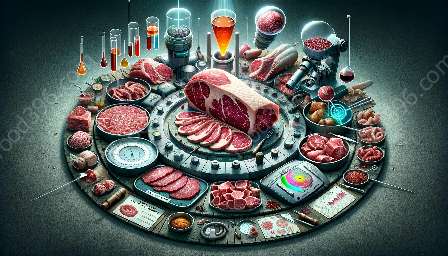Meat juiciness is a critical aspect of meat quality evaluation, closely related to consumer satisfaction and indicative of the overall sensory experience of meat consumption. In meat science, the evaluation of meat juiciness is a complex process that involves various factors including the type of meat, cooking methods, and muscle structure. Understanding these factors is essential in ensuring the production of high-quality, flavorful meat products.
Importance of Meat Juiciness
The perception of juiciness in meat is strongly linked to its palatability and overall eating experience. Juicy meat is often associated with tenderness, succulence, and flavor. The juiciness of meat plays a pivotal role in consumer satisfaction and influences their perception of meat quality. Proper evaluation of meat juiciness is essential for producers, retailers, and researchers to understand consumer preferences and make informed decisions to meet market demands.
Factors Influencing Meat Juiciness
Several factors contribute to the juiciness of meat, including the type of meat, muscle structure, and cooking methods. The marbling and fat content within the meat can significantly impact juiciness. The physical structure of muscle fibers and the distribution of moisture also play critical roles. Additionally, the cooking method, temperature, and duration can affect the retention of moisture within the meat, directly influencing its juiciness.
Meat Quality Evaluation
The evaluation of meat quality encompasses various attributes, including juiciness, tenderness, flavor, and appearance. Juiciness contributes to the overall quality perception of meat products and is often assessed using sensory evaluation methods. These methods involve trained panelists or consumers who rate the juiciness of meat samples based on specific sensory criteria, such as mouthfeel and perceived moisture content. Objective measurements, such as the determination of drip loss and cooking loss, are also utilized to assess meat juiciness in research and industry settings.
Connection to Meat Science
Meat science focuses on the study of meat and meat products, encompassing aspects of production, processing, and quality evaluation. The evaluation of meat juiciness is a fundamental aspect of meat science, as it involves understanding the biochemical and physiological factors that contribute to the perception of juiciness. Researchers in the field of meat science strive to unravel the intricate mechanisms behind meat juiciness, enabling advancements in meat production and preservation techniques to maintain desirable sensory attributes in meat products.
Conclusion
The evaluation of meat juiciness holds significance in both meat quality evaluation and meat science. Understanding the factors influencing juiciness and its sensory impact is crucial in producing high-quality meat products that align with consumer expectations. By exploring the interplay of juiciness with tenderness, flavor, and overall eating experience, stakeholders in the meat industry can enhance product development, optimize processing techniques, and ultimately meet the demands of discerning consumers.

